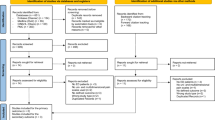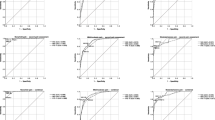Abstract
Background
Perioperative pain management is an essential component to improving patient outcomes. Measurement and description of pain are challenging and vary in different contexts. The objective of this study was to assess the utility of self-reporting via visual analogue scales using the Jerrycan visual analogue scale in the assessment of post-operative pain and to validate the use of this novel scale compared to standard pain scales.
Materials and methods
Two hundred and forty-one inpatients who underwent surgical procedures were prospectively assessed for post-operative pain over a 12-month period from February 2016 to January 2017. Participants included patients who underwent general surgery, orthopedic and obstetrics/gynecology procedures. On post-operative day one, four scales were assessed: Verbal scale, Hands scale, Faces scale and Jerrycan scale, each ranging from 0–5. Scores for each scale were recorded, and agreements between scales were calculated using kappa values and Spearman's rank coefficients.
Results
The mean age was 34.8 years and more female subjects were evaluated (68%). The majority received spinal anesthesia (61%). The mean pain score was 2.5 for all scales. The Jerrycan (0.50) and Faces scales (0.43) had moderate agreements with the Verbal scale. Participants preferred the Jerrycan Pain Scale.
Conclusion
The Jerrycan pain scale had comparable scores and reasonable agreement with 3 other pain scales among a cohort of post-operative patients. Patient preference and ease of use of the Jerrycan scale may impact assessment and management of pain in a rural African setting. This scale may be adapted for use in similar resource settings for post-operative pain management.



Similar content being viewed by others
References
Brunton S (2004) Approach to assessment and diagnosis of chronic pain. J Fam Pract 53(10 Suppl):S3–S10
Aziato L, Dedey F, Marfo K et al (2015) Validation of three pain scales among adult postoperative patients in Ghana. BMC Nurs 14(1):42
Masigati HG, Chilonga K (2014) Postoperative pain management outcomes among adults treated at a tertiary hospital in Moshi. Tanzania Tanzan J Health Res 16(1):47–53
Kintu A, Abdulla S, Lubikire A et al (2019) Postoperative pain after cesarean section: assessment and management in a tertiary hospital in a low-income country. BMC Health Serv Res 19(1):68
Mwaka G, Thikra S, Mung'ayi V (2013) The prevalence of postoperative pain in the first 48 hours following day surgery at a tertiary hospital in Nairobi. Afr Health Sci 13(3):768–776
Bodian CA, Freedman G, Hossain S et al (2001) The visual analogue scale for pain: clinical significance in postoperative patients. Anesthesiology 95(6):1356–1361
Bech R, Lauritsen J, Ovesen O et al (2015) The verbal rating scale is reliable for assessment of postoperative pain in hip fracture patients. Pain Res Treat 2015:676212
Hartrick C, Kovan J, Shapiro S (2003) The numeric rating scale for clinical pain measurement: a ratio measure? Pain Pract 3(4):310–316
Blum D, Selman L, Agupio G et al (2014) Self-report measurement of pain & symptoms in palliative care patients: a comparison of verbal, visual and hand scoring methods in Sub-Saharan Africa. Health Qual Life Outcomes 12(1):118
Altman D (1991) Practical statistics for medical research. Chapman & Hall, London, pp 277–321
Adwok E, Ocitti J (2000) Post-operative management of pain following major abdominal and thoracic operations. East Afr Med J 77(6):299–302
Woldehaimanot T, Eshetie T, Kerie M (2014) Postoperative pain management among surgically treated patients in an Ethiopian hospital. PLoS ONE 9(7):e102835
Zborowski M (1952) Cultural components in response to pain. J Soc Issues 8(4):16–30
Peacock S, Patel S (2008) Cultural influences on pain. Rev Pain 1(2):6–9
Chou R, Gordon DB, de Leon-Casasola OA et al (2016) Management of postoperative pain: a clinical practice guideline from the American Pain Society, the American Society of Regional Anesthesia and Pain Medicine, and the American Society of Anesthesiologists' Committee on Regional Anesthesia, Executive Committee, and Administrative Council. J Pain 17(2):131–157
Kranke P, Weibel S (2018) Pain relief during labour: challenging the use of intramuscular pethidine. Lancet 392(10148):617–619
O'Connor A, Schug SA, Cardwell H (2000) A comparison of the efficacy and safety of morphine and pethidine as analgesia for suspected renal colic in the emergency setting. J Accid Emerg Med 17(4):261–264
Stull DE, Leidy NK, Parasuraman B et al (2009) Optimal recall periods for patient-reported outcomes: challenges and potential solutions. Curr Med Res Opin 25(4):929–942
Acknowledgments
This study was funded by a study grant from Research for Health Inc. Cuyahoga Falls, OH 44223
Author information
Authors and Affiliations
Corresponding author
Ethics declarations
Conflict of interest
All authors declared no conflict of interest.
Ethical approval
The study was approved by the Tenwek Hospital Institutional Ethics and Research Committee.
Informed consent
Informed consent was obtained from all individual participants included in the study
Additional information
Publisher's Note
Springer Nature remains neutral with regard to jurisdictional claims in published maps and institutional affiliations.
Rights and permissions
About this article
Cite this article
Mwachiro, M., Mwachiro, E., Wachu, M. et al. Assessing Post-operative Pain with Self-reports via the Jerrycan Pain Scale in Rural Kenya. World J Surg 44, 3636–3642 (2020). https://doi.org/10.1007/s00268-020-05685-x
Accepted:
Published:
Issue Date:
DOI: https://doi.org/10.1007/s00268-020-05685-x




